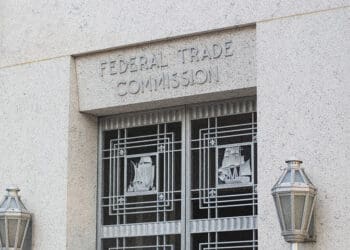Companies using noncompete agreements to safeguard their competitive edge are rightly concerned as the FTC’s noncompete ban remains in limbo after a Texas judge ruled the agency lacked authority to ban such agreements. A group from law firm Baker Donelson suggest incorporating regular audits as part of your plan for securing protected information.
Corporate leaders concerned about protecting the recipe for their company’s success have been following the fitful path of the FTC’s rule banning noncompetes. A judge in Texas just this week blocked the rule, which was set to take effect in early September. (An agency spokeswoman said the FTC is considering an appeal.) A previous ruling in Pennsylvania had left the regulation in place, which could set up a review by higher courts.
Regardless of the ultimate outcome, noncompetes are not the only or even the most effective way to prevent losing customers and revenue. Companies across all industries, including energy, financial services, healthcare, manufacturing, technology, telecommunications, retail and hospitality, must above all be proactive in identifying and guarding the non-public ideas, strategies, plans, customer lists, documents, data and other valuable information that uniquely makes them tick.
This information may qualify for protection as a trade secret — a specific type of confidential information protected by federal and state trade secret laws — or may be protected under various types of contracts, such as confidentiality, nondisclosure and employment agreements; corporate policies and employee handbooks; and other laws that create obligations arising from employment relationships.
Regardless of the legal theory, the business must be able to prove that it took reasonable steps to keep its information confidential and reasonably and properly protected its trade secrets. Proving reasonable steps requires both a plan and verification that the plan is operating effectively.
The primary way to verify that a protection plan is working is by conducting routine audits, which also help create a culture of confidentiality, security and compliance. Auditing should involve a group or team — avoid siloed employees who can act without checks or balances — responsible for reviewing that protocols have been implemented, are being followed and are shored up against potential weaknesses and breaches.
Regulatory Compliance in a Post-Chevron World: Fasten Your Seatbelts
The cracks are already showing. A U.S. District Court in Texas, less than a week after the Supreme Court issued its Loper Bright decision, cited the ruling in partially striking down the FTC’s controversial ban on noncompete agreements in employment.
Read moreDetailsCompanies should create an audit checklist identifying the auditors, items reviewed and actions taken, as well as the dates and other details for each audit conducted, which for all items should occur at least annually. Consider including the activities below in your checklist.
- Review personnel files to verify they contain current and executed policy acknowledgments, training certificates or confirmations, employment contracts, confidentiality and nondisclosure agreements
- Review contractor and vendor files or records to verify they contain current and executed confidentiality and nondisclosure agreements
- Update and provide training on confidentiality and security policies to all employees at least annually
- Train human resources, risk management and other appropriate personnel on prompt and thorough investigation and handling of suspected unauthorized disclosure, misappropriation and misuse of protected information
- Evaluate the investigation and handling of any incidents to identify the root cause of any issues and actions needed to prevent or minimize the opportunity for recurrence
- Monitor password protocol compliance, including employee practices for storing passwords (such as the use of password management software as opposed to sticky notes or personal mobile phones)
- Work with counsel to update all personnel policies and workplace rules relating to technology usage and protecting confidential information
- Verify that limitations on the access to protected information are being observed, that only those individuals who need access have it and that effective technology is in place to lawfully monitor and record who accesses and uses confidential information and trade secrets
- Verify that confidential information and trade secret information is marked confidential, proprietary or trade secret, as applicable, and handled properly and carefully, i.e., not being displayed on computers without screen savers in view of those who do not need access and not being left uncovered on desks when an office is unattended and unsecured
- Verify that employee departure and onboarding protocols are developed, documented and followed
Trust without verification is merely a hope or a wish, as one company recently learned when its request for a preliminary injunction in a trade secrets case was denied. In Freedom Capital Group LLC v. Blue Metric Group Freedom Capital requested an injunction under federal and state trade secret laws to prevent misappropriation by its former outside counsel and an independent contractor. Freedom Capital asserted that it took reasonable steps to keep its trade secrets and confidential information, including secure access credentials and training representatives on confidentiality rules. The court found, however, that Freedom Capital gave independent contractors access to purportedly sensitive information without any confidentiality or nondisclosure agreements. The court also rejected Freedom’s assertion that it trained its representatives on confidentiality obligations because it failed to produce any evidence of relevant training materials or communications.
This case illustrates the need to have a plan for securing your protected information and regularly auditing the efficacy of that plan. Verifying that the protection plan is working will place your company in a strong position to prevent and, if necessary, successfully pursue legal relief in the event of disclosure, misappropriation and misuse of your confidential information and trade secrets.




 Jennifer L. Anderson
Jennifer L. Anderson Adam S. Baldridge
Adam S. Baldridge A shareholder in Baker Donelson's Memphis and Fort Lauderdale offices, Nicole Berkowitz Riccio focuses her practice in the areas of patent, trademark, copyright, trade secret, and unfair competition litigation.
A shareholder in Baker Donelson's Memphis and Fort Lauderdale offices, Nicole Berkowitz Riccio focuses her practice in the areas of patent, trademark, copyright, trade secret, and unfair competition litigation.








